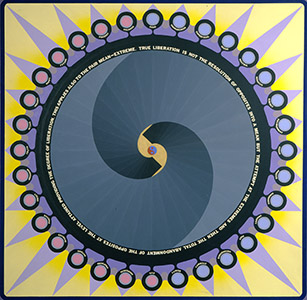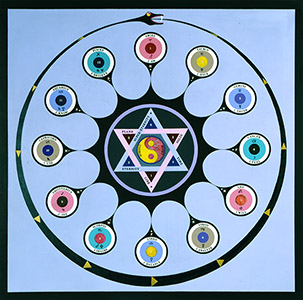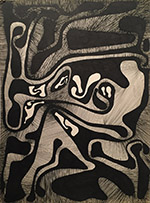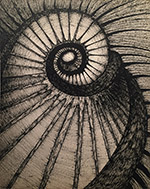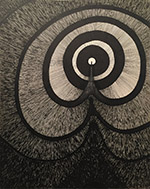![[Francis Naumann]](/4logo.gif)
![[Francis Naumann]](/4logo.gif)

Paul Laffoley (1935-2015) was a visionary. “Visionary art is the art of making symbols,” he wrote in 1970, “which evoke the transcendental existence and character of the cosmic forces of the universe.” He believed that the works themselves possessed an ability to manifest these forces, which he felt were eternal and shared by artists in different periods of history. “The forms of visionary art are not time or ego-oriented in terms of style,” he wrote, but instead, are a product of “mankind’s collective unconscious.” Laffoley fully understood the complex conceptual constructs that are the basis for his paintings, ideas extrapolated from his deep reading and understanding of science, mathematics, higher dimensions, time travel, alchemy, astrology, psychology, mysticism, literature, philosophy, religion, the occult, etc.
Upon graduation from high school, Laffoley studied at Brown University, where he took courses in the classics, philosophy, and art history. During the course of his studies, he became increasingly interested in architecture, because it consisted of diagrams that rendered objects in space with accuracy and precision, so upon graduation, he enrolled in the Department of Architecture at the Harvard Graduate School of Design. His study at Harvard came to an abrupt end, for he was dismissed from the program for what he later described as “conceptual deviance.”
After a brief sojourn in New York City in the early 1960s—where he was apprenticed under the visionary architect Frederick Kiesler and met Pop artist Andy Warhol—he returned to Boston, where his work crystalized, following a process to which he would adhere for the next half-century. His paintings were generally square in format, into which he painted abstract patterns in a circular configuration (loosely resembling the appearance of a Hindu mandala). Above or below these abstract shapes or emanating from them he affixed vinyl letters that spelled out the underlying structure of various operating systems he employed: psychotronic devices, lucid dreams, meta-energy, time travel, and utopian theories. The paintings were always diagrammatic, an approach that can be traced to his training as an architect, but which he felt best suited the singularity of his vision. Each painting was preceded by years of investigation into his subject, sometimes accompanied by detailed handwritten notes, all in an attempt to ascertain relationships that could be structured into a single image, creating a work of art that contained what he called a “structured singularity.”
In 1971, Laffoley founded The Boston Visionary Cell, an organization that consisted of eight artists and writers of which he was unquestionably the guiding force. Whereas the artists who formed part of the original group eventually went their own separate ways, for Laffoley the organization never ended (he would keep it incorporated as a legal entity until his death). For the remaining years of his life, he remained committed to its principles, compiled notes from his readings and continued to paint pictures in the confines of his studio, generating the concrete results of his thinking in a space that could be regarded as his own private visionary cell.
The show consists of 10 paintings dating from 1963 through 1975, as well as 5 ink drawings made in 1963. The drawings consist of organic shapes, repeated patterns that echo forms in nature; they are not precise visual analogues, but rather images that seem to have been composed of the microscopic and, at the same time, cosmic (the two extremes in the natural world that physicists have attempted to unite in a common formula for generations). Also shown in a vitrine will be vintage photographs of Laffoley and examples of his elaborate, handwritten manuscripts.
